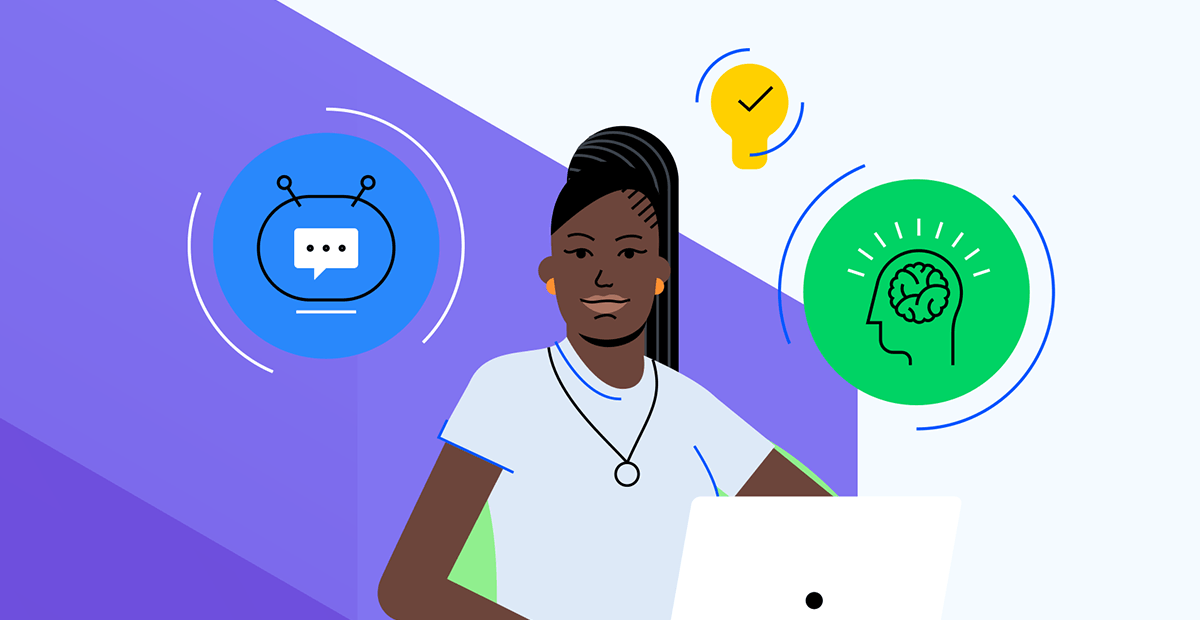Writing for Bots or Humans—That is the Question

In a world dominated by information, creating a piece of content that won’t be buried just after it’s published is a tough task. It needs to be interesting and catchy, provide all needed information, target the specific need of an audience and be optimized for search bots. It sounds almost impossible, but there are ways to stand out from the crowd.
You are probably living on an isolated island if you haven't heard the phrase “content is king” at least once in your life. And if you’re doubting the truth of that statement, think for a while: your blog is content, your documentation is content, your product and solution page are content, organic results in Google, Bing, Yandex, Baidu are content, your social media profiles are content—even images with famous quotes, which you share on your personal Facebook or Twitter, are content. Everything is based on pieces of information, which are made more attractive with the help of visual elements.
But if you are coming from a business background, you would argue that “Customers are king.” We create products and services for them and write all these different pieces of content for them, and we try to organize it in the most attractive and user-friendly way on our websites. We create “customer personas” to try to predict their behavior and desires and offer them the right information at the right moment of their customer journey.
It looks like we are about to say: “Houston, we have a problem,” because there are two kings in town, and content creation starts to look like a battleground.
Additionally, suppose you are coming from a journalist and SEO background like me. In that case, you might argue that the real kings are the search engines. Because no matter how great your content piece is, and no matter how deeply you have understood your customers, if your content is buried on the 10th page of the organic results, no one will ever see it (except you, of course).
Choosing the right “king” and the right content strategy is not a simple task, as it might determine your future. So, let's start with some more straightforward questions:
What are the characteristics of great content?
Addresses a real problem or need
If no one is interested in the topic you are writing about, it won’t turn into a great content piece. You need to find a topic your readers will find engaging and show them that you care about their problems and needs. The best-case scenario is if you fine-tune your content based on your audience's language and cultural specifics.
Informative and authentic
Your content needs to be original. Don’t try to mislead your readers. Human minds are not machines and may miss duplicated content appearing here and there, but if copy and paste is your strategy, at some point your readers will catch you. Always try to cover even the most minor details related to a topic. Your readers will appreciate that you are thinking about them and that they can find everything they need in one place.
Discoverable and accessible
Make sure that your content can be found easily. As a rule, if your content is more than 3-4 clicks away from your website home page, only a few users might have the patience to find it. Time is one of the scarcest resources, and customers are especially sensitive about it. Your content also needs to be accessible. If the text is too small or the colors are not suitable for color blind users, you may end up in the same situation—having great content, but just a few users able to read it.
What do your customers want?
Answers to their questions
No matter if they are searching for information on how to create an enterprise website with a cloud-based CMS or inspiration for their vacation in Maui, customers want answers to their questions. They are coming to Google search or your website with concrete intent and a concrete need in mind. If they are not finding what they are looking for, they will jump to another result or website.
Everything they need in one place
Imagine this situation: you are planning a vacation and searching for the best places to visit near your hotel. And then you need to open ten different websites and pages—one for sightseeing, a second for beaches, a third for restaurants and a fourth for family-friendly activities. We are all website users, and each of us knows how frustrating it can be if after 15-20 minutes of searching for concrete information, you end on a page promising to have everything you need for your trip, but it gives you just partial information.
Easy-to-find, Easy-to-read content
Users search for answers in three main ways: they go directly to a website they trust and try to find the needed information, they use the website search or they use search engines. No matter the means, the information presented on your website needs to be easily findable. Your customers also want you as a website owner to make their lives easier. Offering them a content piece with 2,000 words, without paragraphs and subtitles, won’t win their hearts.
What are the basics of search engine optimization?
Content focused on concrete user intent
Search engines are becoming better at understanding human language, its nuances, and culture specifics. In 2020, Google announced that its BERT algorithm is applied to 100% of English search queries. According to Google:
“These improvements are oriented around improving language understanding, particularly for more natural language/conversational queries, as BERT is able to help Search better understand the nuance and context of words in Searches and better match those queries with helpful results.”
With improvements like this, search engines do not rely on guessing and mapping search queries and organic results. They better understand what the user needs and has in mind when using a concrete phrase for a search. And different content pieces may rank well for different search queries, because search engines will give advantage to the ones closer to the user intent.
Providing the “right” answer
The “right” answer for a search query depends on the user intent behind this search. If you are searching for the result of a match from Euro 2020, a simple feature snippet may give you enough information. But if you are searching for how your enterprise file transfers can be compliant with GDPR, this may require a more comprehensive best practice guide or a solution page. The best content piece for search engines gives the right amount of information to solve the user's problem or need.
Crawlable and indexable
Search engines rely on bots to find new pages. If your content piece is not linked from anywhere on your website or was restricted somehow, it just won’t appear in the organic results. And like real users, bots also don’t have infinite patience when they need to discover your new content pieces and “understand” them.
Writing for bots or humans?
It’s starting to look like you don’t have to choose. To make your content strategy work, you need to combine the needs of bots and humans into one.
If search engines understand the customers' intent, you need to understand it too and make sure that you provide the right information for the users. Sounds complicated, because as a content creator you don’t have algorithms and have to rely on your judgment and intuition.
This is precisely where search engine optimization experts might help, because search engines have already done this analysis and it is available for free in the organic search results. There, you can find clues for what the intent behind a specific search query is and what type of content piece is needed—a longer best practice guide, a shorter FAQ with an image, or a product page with price information.
And if you want to make sure that your content is optimized for both bots and humans, you need to put on your customers' shoes and check how they search and what phrases they use. You can do this by reading forum and community threads to try and spot patterns or start your content creation project with keyword research.
Covering the best practice guides for crawlability and indexation will also make your content piece easy to find by customers. And you can achieve good readability if you follow the on-page optimization rules. Of course, you can also go one step further and add some specific optimizations just for the bots—like structured data markup.
Your content strategy doesn’t need to have one “king”, it is just a three-headed Cerberus.

